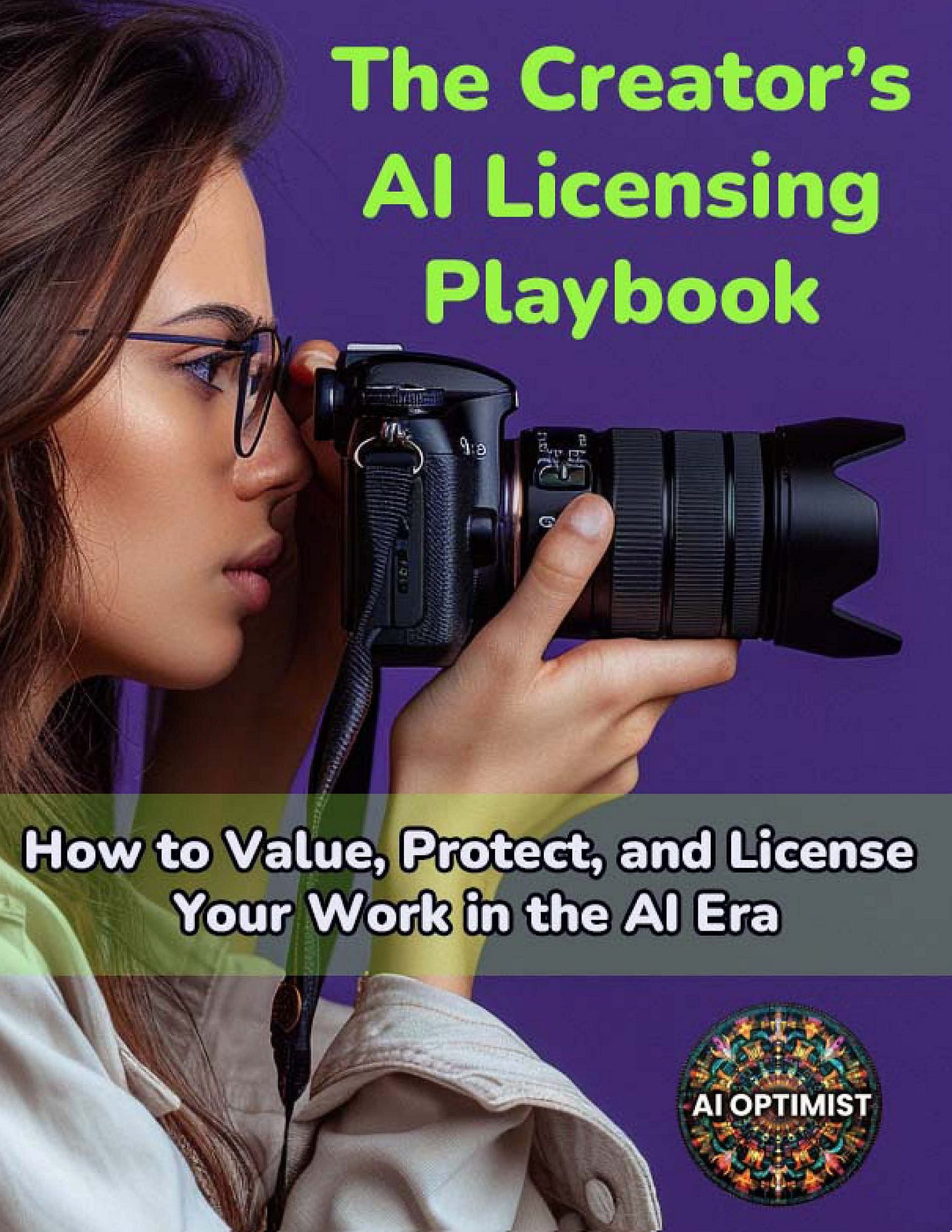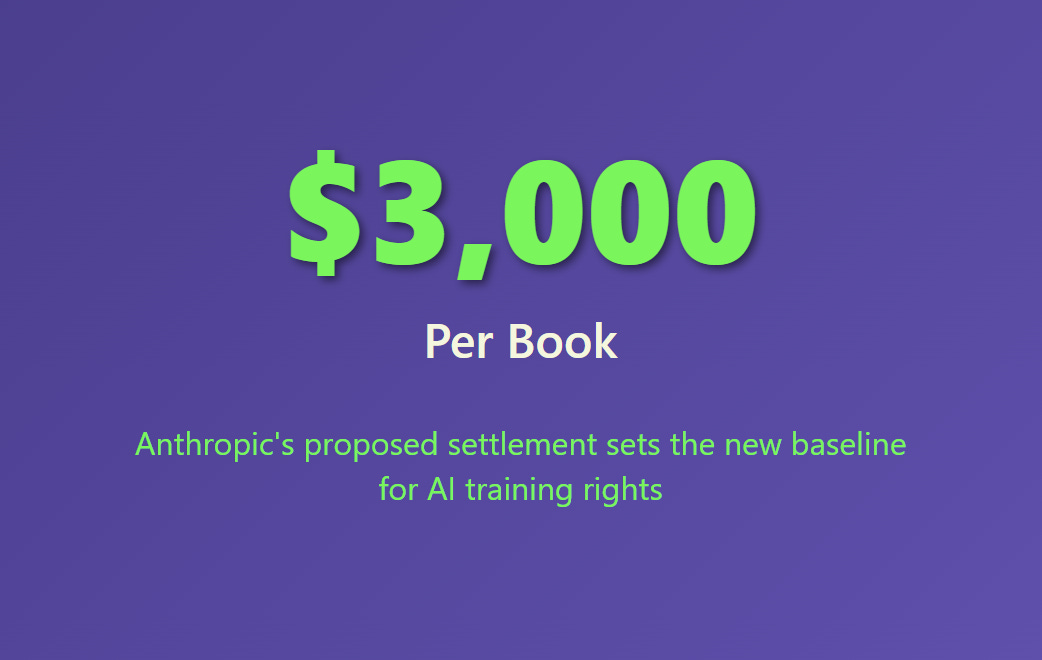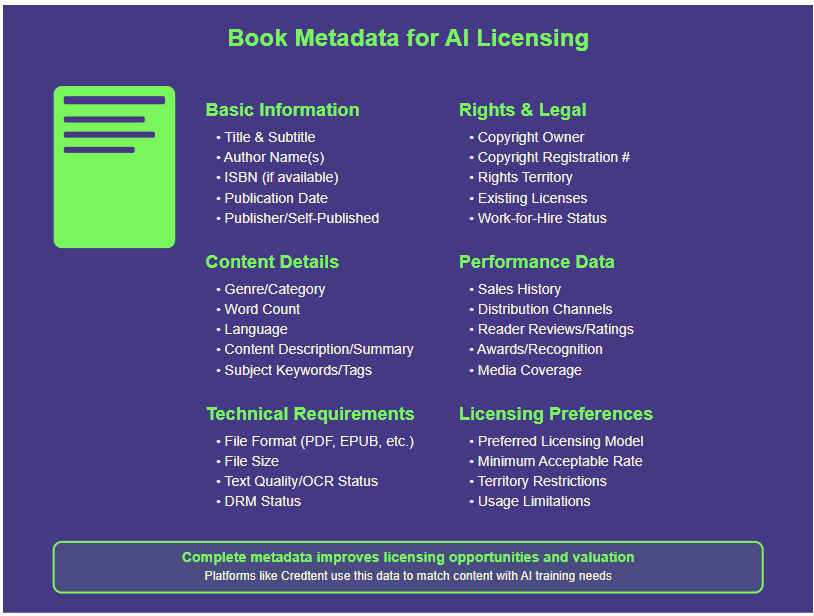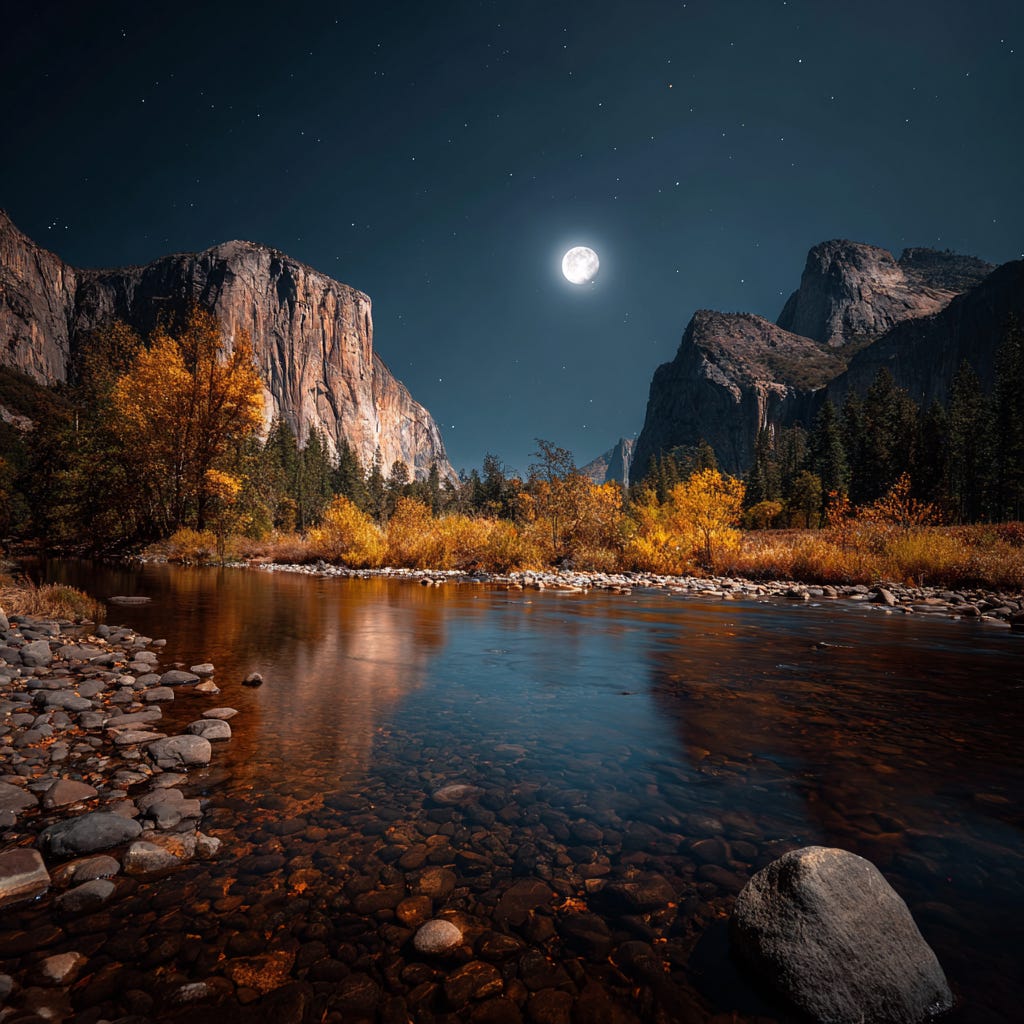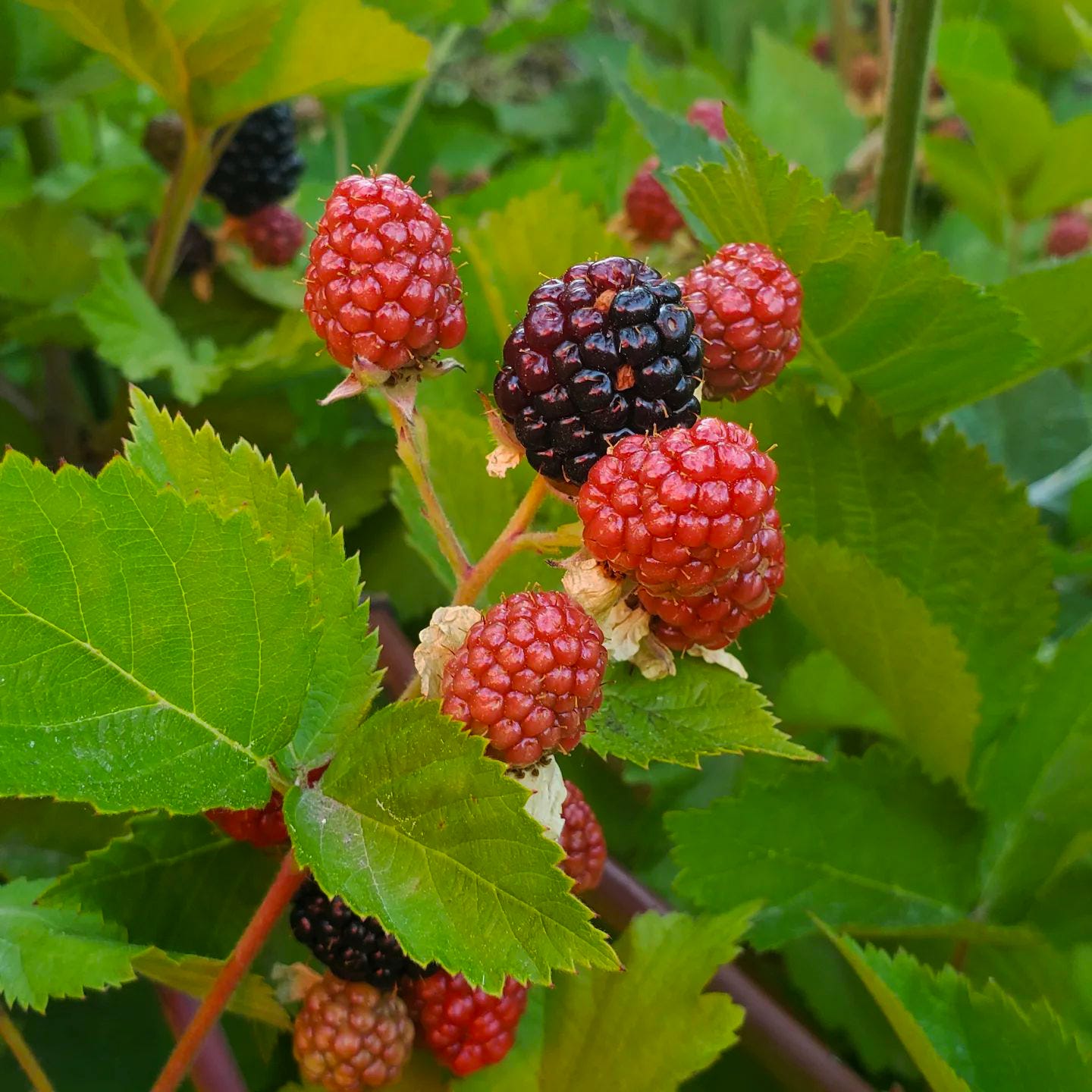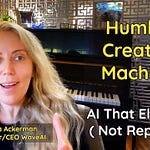Time for creators to be recognized and paid by AI, finally!
Those days of AI stealing content for free and without permission just crashed in a quiet, proposed settlement - call it AI licensing rates 2025.
Creators are being given choice and control over how their work is used by AI, and may even get paid with licensing!
After years of big tech telling creators their work has no value, something shifted. Anthropic just proposed paying $1.5 billion to settle copyright claims—roughly $3,000 per book.
This is not the net amount received by individual authors, as it will be reduced by administrative costs and divided among rightsholders if multiple parties are involved.
For the first time, a judge is recognizing that human creativity has measurable worth in AI training. Not just bestselling authors. Regular creators like you.
This isn't some distant future promise. This is happening now, and it's opening doors that have been slammed shut since AI started scraping content without permission or payment.

The Evidence Shows: AI Companies Are Finally Paying AI licensing rates in 2025
Here's what most people missed in the headlines. Anthropic didn't just throw money at a legal problem. They established something unprecedented: a baseline value for creative work in AI training.
Harper Collins negotiated deals worth $2,500-$5,000 per book with major AI companies.
These aren't charity payments—they're business investments in quality training data.
Why the sudden change? Because AI companies discovered what creators always knew: garbage in, garbage out.
They need your expertise, your unique perspective, your carefully crafted content to build better AI systems.
The wild west era of free content scraping is ending. The licensing era is beginning.
What you can do now:
Document what creative work you own completely
Start thinking about your content's unique value
Don't wait for perfect information—early participants often secure better rates
What $3,000 Per Book Means for You Right Now? Author’s AI Revenue
That $3,000 figure isn't a lottery ticket—it's validation. A federal judge essentially agreed that copyrighted creative work has quantifiable value in AI training. Even if you never see a licensing check, this changes everything.
You now have a legal settlement that says your work isn't "training material"—it's valuable intellectual property. This gives you choices you didn't have before:
License your work and get paid
Opt out entirely and protect your content
Control how AI systems learn from your creativity
The key word here is control. For years, creators watched their work get absorbed into AI systems without consent or compensation.
Now there's a path to actual choice.
But here's the reality check: this applies to work you own the copyright to. If you don't have clear legal ownership, licensing becomes nearly impossible. AI companies need defensible rights to avoid future lawsuits.
Your next moves:
Check your copyright status on existing work
Register copyrights for valuable content (it's easier than you think)
Understand that timing matters—prepare now for licensing opportunities in 2026
What's Your Creative Work Actually Worth to AI?
Not all content gets valued equally. After researching this market for over a year, certain patterns emerge that determine what AI companies will pay for.
Nonfiction typically commands higher rates than fiction. Why? It's factual, less dependent on storytelling brilliance, and provides reliable training data.
A well-researched business book or technical guide offers more consistent value than a novel—unless that novel is awesome. And that’s up to the reader!
Sales history matters. If your book sold thousands of copies, that's market validation AI companies understand. It proves real people found value in your work.
Uniqueness drives premium pricing. Generic content gets generic rates. Specialized expertise, unique perspectives, and distinctive voices command attention.
Get the AI Licensing, metadata advantage:
AI systems need context to understand value. When you describe your work clearly—genre, audience, expertise level, sales performance—you're not just filling out forms. You're teaching AI why your content matters.
Think of metadata as your content's resume. Without it, you're just another file in a database. With it, you're a valuable training resource with proven worth.
Build your content value:
Inventory your best-performing content
Gather sales data, awards, recognition, media coverage
Start documenting what makes your work unique and valuable
Pricing Reality: What Nonfiction and Fiction Actually Earn
Based on current market data, here's what creators might expect:
Quality nonfiction with clear copyright and sales history: $2,000-$5,000 per book. Business guides, technical manuals, and specialized expertise command top rates.
Fiction faces steeper challenges unless it's genuinely outstanding. Most fiction licensing falls in the $1,500-$3,000 range, with exceptional storytelling pushing higher.
But remember—these are one-time payments for current licensing models.
Some platforms are experimenting with annual subscriptions or revenue sharing. The economics are still evolving rapidly.
The volume game matters too. Individual authors might earn decent side income, but creators with larger catalogs see meaningful revenue.
Five books at $3,000 each through a creator-friendly platform (~15% fee) nets around $12,750.
Compare that to traditional publishing royalties, and licensing suddenly looks very interesting.
Calculate your potential:
Calculate potential licensing value for your existing work
Focus on your highest-quality, best-documented content first
Consider building content specifically designed for licensing value
AI Values for Photos and Art: The Visual Content Market
Visual content follows different rules entirely. This market resembles traditional stock photography, but with an AI training twist.
High-resolution photos (4K+) command premium rates. Landscapes, urban scenes, and complex compositions provide rich training data.
Simple headshots? Not so much—AI already handles those well.
Original artwork, especially paintings, can earn $500-$1,000 per piece for AI licensing.
The key is documentation: medium, technique, inspiration, creation process. AI companies pay for context as much as pixels.
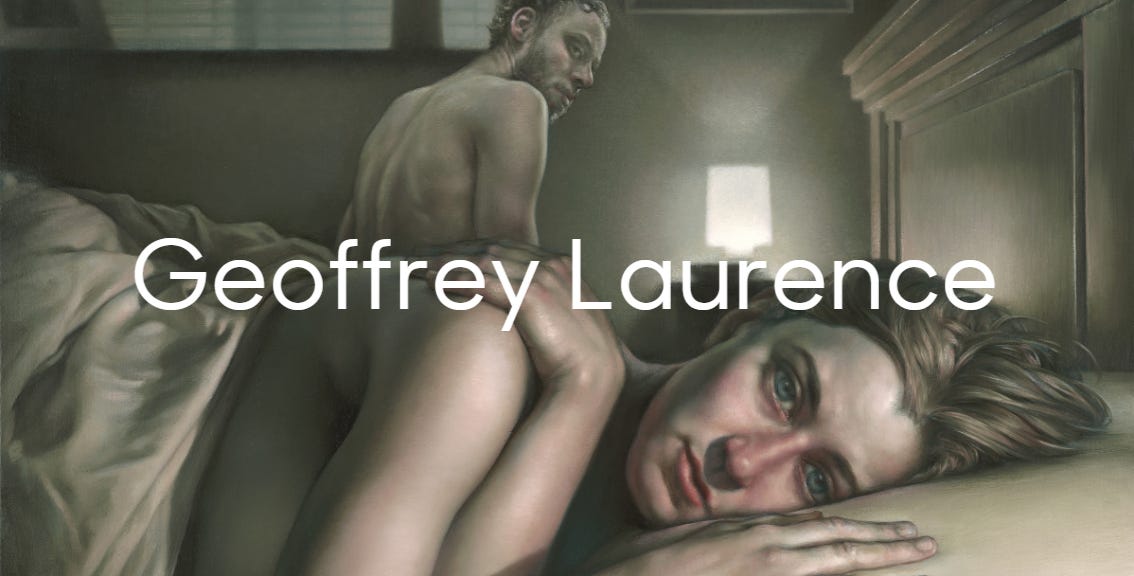
Here's where platform choice really matters. Getty Images takes 75-80% of licensing fees.
Newer creator-focused platforms take only 15%. That difference adds up quickly.
For photographers and artists, the timing couldn't be better. AI companies need diverse, high-quality visual training data, and they're willing to pay for it.
Maximize your visual content value:
Audit your best visual content for licensing potential
Organize high-resolution files with detailed descriptions
Research multiple platforms—fees vary dramatically
Quality Matters: Yosemite Beats Headshots Every Time
Not all images get equal treatment in AI licensing. After studying what companies actually buy, clear patterns emerge.
Landscape photography, especially iconic locations like Yosemite, commands top rates.
These images provide complex visual information: lighting, composition, natural elements, seasonal variation.
AI systems learn more from a single great landscape than dozens of simple portraits.
Urban photography works well too. Street scenes, architecture, cultural events—anything showing human environments in detail.
The richer the visual information, the higher the licensing value.
Professional studio shots with controlled lighting often outperform casual smartphone photos, but not always. Sometimes authentic, candid moments provide exactly what AI training needs.
The metadata advantage applies here too. When you tag a sunset photo with location, time, weather conditions, and technical details, you're providing training context that makes your image more valuable.
Focus your efforts:
Prioritize your most visually complex and interesting photos
Add detailed tags and descriptions to your best work
Focus on unique locations and authentic moments over generic stock-style shots
Four Steps to AI Licensing
Ready to move from passive content source to active licensing participant? Here's your practical roadmap:
Step 1: Secure Your Rights
Get copyright protection for anything you want to license. Without clear legal ownership, licensing becomes nearly impossible. This isn't optional—it's foundational.
Step 2: Document Everything
Gather the information that proves your content's value: sales numbers, awards, media coverage, anything showing market validation. This context dramatically affects licensing rates.
Step 3: Master Your Descriptions
Spend serious time crafting detailed, accurate descriptions of your work. Include genre, audience, expertise level, unique elements. Think of this as teaching AI why your content matters.
Step 4: Choose Your Platform
Research fee structures carefully. A platform that takes 15% vs. 80% completely changes your economics. Start with creator-friendly options but don't limit yourself to one platform.
Your action plan:
Begin with your single best piece of content
Work through all four steps completely before adding more
Set realistic expectations—this is preparation for 2026+, not immediate income
Market Reality Check: Planting Seeds for Tomorrow's Harvest
After a long threatening winter of AI taking content without permission or payment, spring is finally arriving.
But let's be clear about what season we're actually in.
This is planting time, not harvest time.
Anthropic's proposed settlement won't pay out until next year at earliest. Most licensing programs are still in beta. Platform sustainability remains unproven.
The volume challenge is real. Creator-friendly platforms need massive scale to survive on 15% fees.
Traditional platforms with higher fees can operate profitably with lower transaction volumes. This creates different incentive structures that affect long-term survival in a hyper competitive market.
But here's what creators gain immediately: choice.
Even without licensing payments, this process gives you control over how your work gets used in AI training.
You can opt out entirely, negotiate specific terms, or participate actively in this new economy.
The alternative, hiding behind paywalls and hoping AI can't find your content; feels like fighting the future instead of shaping it.
We're moving toward a world where human creativity partners with AI systems, not one where we hide from them.
Your creativity is the fuel that makes AI systems valuable. That was always true—now it's finally getting recognized in dollars and legal settlement.
The seeds you plant now, the relationships you build, the quality content you document and protect.
These investments compound over time. Early participants often secure better long-term rates and stronger platform relationships.
This isn't about getting rich quick. It's about getting ready thoughtfully for a market that's just beginning to emerge.
It's about moving from having your work taken without consent to having choices about how you participate in AI development.
After years of being told your creativity has no value, now we have a $3K value put on copyrighted books.
That $3,000 baseline isn't the ceiling. It's the foundation for what human creativity is actually worth.
The question isn't whether AI will use human content for training. That's already happening.
The question is whether creators will be partners in that process or just sources.
Choose partnership. Choose preparation.
Choose to plant those seeds now, while the ground is still soft and the opportunities are still growing.
Human creativity isn't going anywhere. It's just finally getting the recognition, and compensation, it always deserved.
Ready to get started? As a subscriber, you'll immediately receive my Creators’ AI Licensing INTEL" - This is my first public breakdown of what AI training content is actually worth—built from early deals, platform data, and industry settlements. The numbers are still early, but they give both creators and AI companies a starting benchmark for this new licensing economy.
Market Stage Warning: Most platforms mentioned are in beta or early stages. Current valuations represent early market pricing and may change significantly.
Your Experience May Vary: Actual earnings depend on content type, copyright status, existing revenue, and many other factors. Some creators may earn significantly more or less than these estimates suggest.
No Guarantees: This guide provides educational information only. Market conditions, platform policies, and legal frameworks change rapidly. No earnings, platform success, or market outcomes are guaranteed.



